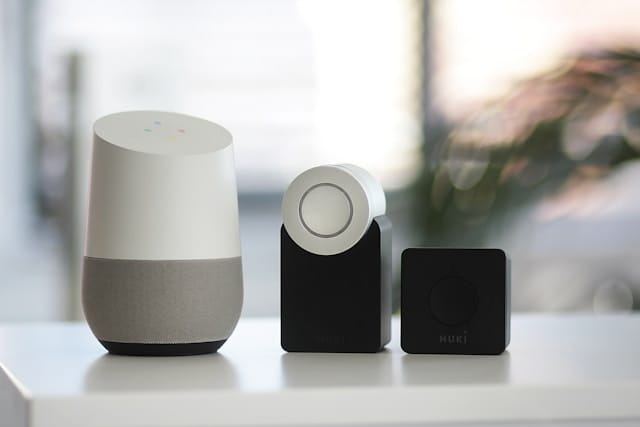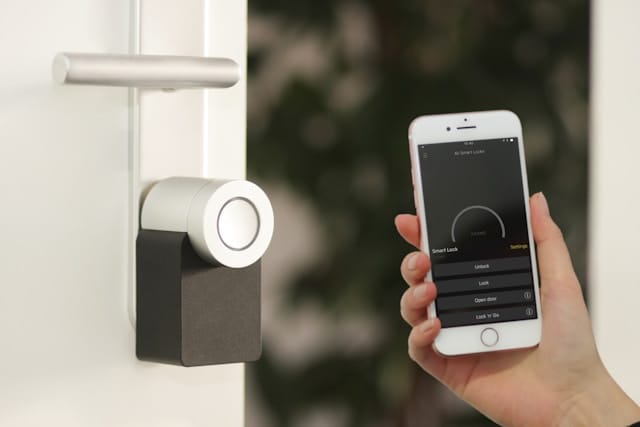In today’s rapidly evolving technological landscape, setting up a smart home has become more accessible and practical than ever. By integrating the latest AI technologies into your living space, you can enjoy enhanced convenience, security, and efficiency. A smart home utilizes a network of interconnected devices that can be controlled remotely through smartphones, voice assistants, or automation systems. This connectivity allows homeowners to streamline their daily routines, monitor their home environments, and create personalized living experiences.
The benefits of a smart home extend far beyond mere convenience. AI-powered devices can optimize energy usage, enhance security measures, and improve overall home management. Imagine waking up to the gentle glow of smart lighting, adjusting your thermostat automatically based on your preferences, and receiving real-time security alerts when unexpected activity is detected. Such innovations not only simplify our lives but also contribute to sustainable living by reducing energy waste.
In this comprehensive guide, you will learn how to set up a smart home using the latest AI technologies. We will cover essential components, including smart lighting, security systems, climate control, and voice assistants, while offering practical tips for seamless integration. Whether you are just starting your smart home journey or looking to upgrade your existing setup, this guide will provide valuable insights into creating a connected and efficient living space tailored to your needs. Let’s explore the exciting world of smart home technology and transform your living environment into a haven of innovation and convenience.
Key Components to Set Up a Smart Home
Setting up a smart home requires careful consideration of the devices and systems you wish to incorporate. Below are key components that form the backbone of a smart home.
1. Smart Lighting: Illuminate Your Space with Intelligence
Smart lighting systems allow you to control the brightness and color of your home’s lighting through mobile apps or voice commands. These systems are essential when you set up a smart home, as they offer energy efficiency, customizable ambiance, and integration with other smart devices.
Philips Hue: One of the leading smart lighting solutions, Philips Hue offers bulbs that can be customized to different colors and brightness levels. Control them via the Philips Hue app or integrate them with smart assistants like Amazon Alexa and Google Assistant to add voice control to your smart home setup.
LIFX: A hub-free solution, LIFX bulbs offer vibrant colors and seamless control through the LIFX app. These bulbs are a great choice for those who want to keep things simple while setting up a smart home.
By setting up a smart home with intelligent lighting systems, you can create scenes for different times of day, such as “Movie Night” or “Morning Wake-up,” that can be activated with a single command or scheduled automatically.
2. Smart Security Systems: Keeping Your Home Safe
Security is a top priority when you set up a smart home. Smart security systems offer advanced monitoring and alerting capabilities, ensuring that your home is protected 24/7.
Ring Video Doorbell: The Ring Video Doorbell is a must-have when you set up a smart home security system. With a built-in camera, you can see and communicate with visitors from your smartphone. The Ring app also provides motion detection notifications, giving you peace of mind.
Arlo Security Cameras: Whether you need indoor or outdoor surveillance, Arlo provides flexible, feature-rich cameras with options like night vision, motion detection, and cloud storage. These smart cameras are an essential part of any smart home setup that prioritizes security.
By integrating AI-powered cameras and doorbells when you set up a smart home, you can take advantage of features like facial recognition and smart alerts to identify potential threats before they escalate.
3. Smart Thermostats: Energy Efficiency at Your Fingertips
One of the most practical additions when you set up a smart home is a smart thermostat. These devices optimize your home’s heating and cooling systems, learning your preferences and adjusting the temperature to save energy and money.
Nest Learning Thermostat: One of the most popular smart thermostats, the Nest Learning Thermostat adjusts the temperature based on your habits and can be controlled via the Nest app or integrated with voice assistants for easy management. It’s a critical component in energy-efficient smart home setups.
Ecobee SmartThermostat: Featuring built-in Alexa, Ecobee SmartThermostats provide room sensors to ensure consistent temperature across your home. These thermostats can significantly contribute to energy savings when integrated into your smart home setup.
Optimizing your heating and cooling system with smart thermostats not only contributes to sustainable living but also reduces energy costs, making it a smart investment for anyone looking to set up a smart home.
4. Smart Speakers and Voice Assistants: Centralize Control
Voice assistants are the heart of most smart homes, allowing you to control all your devices hands-free. When you set up a smart home, a voice assistant provides a centralized hub for managing all of your connected devices.
Amazon Echo: Powered by Alexa, the Echo is a versatile smart speaker that can control your entire smart home setup. Use it to play music, set reminders, and manage smart devices with voice commands.
Google Nest Hub: If you prefer Google’s ecosystem, the Google Nest Hub offers voice control and a visual interface for managing your devices. It integrates seamlessly with Google services and provides easy access to your favorite apps, adding convenience to your smart home setup.
A smart home setup with voice assistants can make everyday tasks easier, whether you’re turning off lights, adjusting the thermostat, or locking the doors.
Creating a Smart Home Network: Laying the Foundation
A reliable network is essential for connecting all your smart devices. When you set up a smart home, ensuring that your internet infrastructure can support multiple devices is critical to its success.
1. Router Setup: Strong Connectivity is Key
When you set up a smart home, choose a high-speed router with ample coverage to handle the increasing number of devices connected to your network. For larger homes, consider a mesh Wi-Fi system to ensure that you have consistent coverage throughout your space, minimizing connectivity issues.
2. Network Security: Protect Your Smart Home Setup
Securing your smart home network is paramount. When you set up a smart home, make sure to:
- Use strong, unique passwords for your Wi-Fi and smart devices.
- Enable WPA3 encryption for added security.
- Regularly update the firmware on your router and smart devices to protect against vulnerabilities.
3. Device Compatibility: Seamless Integration
Ensure that your smart devices are compatible with each other. Most devices work with popular voice assistants like Amazon Alexa, Google Assistant, or Apple HomeKit. This ensures seamless integration, allowing you to control everything from one platform when you set up a smart home.
Automating Your Smart Home: Simplify Your Life
Automation is a key feature when you set up a smart home. Automation allows devices to work together in harmony, reducing the need for manual control. Here are some ways to automate your smart home for maximum convenience.
1. Routines and Scenes
When you set up a smart home, many devices allow you to create routines or scenes that automate multiple actions simultaneously. For example, create a “Good Morning” routine that:
- Gradually brightens your smart lights to simulate sunrise.
- Adjusts the thermostat to a comfortable temperature.
- Starts brewing coffee with a smart coffee maker.
These routines can be triggered by voice commands, a tap in your app, or scheduled for certain times. By automating tasks, you can maximize the convenience of your smart home setup.
2. Smart Plugs and Switches: Control Anything Remotely
Smart plugs and switches are a simple but effective addition when you set up a smart home. They allow you to control non-smart devices, such as lamps or appliances, from your smartphone or through voice commands.
- TP-Link Kasa Smart Plug: A top choice for smart home setups, Kasa Smart Plugs enable you to control connected devices, create schedules, and monitor energy usage remotely. These small, affordable devices offer a lot of functionality with minimal setup.
Smart plugs give you the flexibility to control any device, even if it’s not inherently smart, which broadens the capabilities of your smart home setup.
Enhancing Security with AI: Stay Safe in a Smart Home
When you set up a smart home, security should be one of your top concerns. AI technologies can significantly enhance home security, providing peace of mind.
1. Facial Recognition
Some smart cameras, such as those offered by Google Nest, come equipped with facial recognition technology, allowing them to distinguish between familiar faces and strangers. This reduces false alerts and provides an extra layer of security when you set up a smart home.
2. AI-Powered Smart Alerts
Smart security systems use AI to analyze patterns of activity and alert you to unusual behavior. For instance, the Nest Cam can notify you if someone is lingering around your home or if motion is detected during unusual hours. By utilizing AI, your smart home setup becomes more responsive and proactive in keeping your property secure.
Integrating AI Into Your Smart Home: Intelligent Living
AI plays a crucial role when you set up a smart home, offering enhanced automation and learning capabilities that improve your home’s efficiency and comfort.
1. AI-Powered Thermostats: Learning Your Habits
Devices like the Nest Learning Thermostat adapt to your schedule and preferences, learning when to adjust the temperature based on your routines. By incorporating AI, your smart home setup becomes more intuitive and efficient, optimizing energy usage without requiring constant adjustments.
2. Voice Assistant AI: Hands-Free Control
Voice assistants such as Google Assistant and Amazon Alexa use AI to interpret and execute your commands, allowing for a truly hands-free smart home setup. Whether you’re adjusting the lighting, managing your security system, or playing music, these AI-powered assistants make everyday tasks more seamless.
Smart Home Energy Management: Sustainable Living
One of the key benefits when you set up a smart home is the ability to manage energy more efficiently. Smart devices can help reduce energy consumption, contributing to both lower utility bills and a smaller environmental footprint.
1. Smart Thermostats: Optimize Heating and Cooling
As mentioned earlier, smart thermostats like the Nest Learning Thermostat and Ecobee SmartThermostat are instrumental in optimizing your home’s heating and cooling systems. They automatically adjust temperatures based on your schedule, ensuring that you’re not wasting energy when no one is home.
2. Smart Lighting: Eliminate Waste
When you set up a smart home, integrating smart lighting is a simple yet effective way to manage energy usage. You can schedule lights to turn off when not in use or use motion sensors to activate them only when someone is in the room. These small adjustments can have a big impact on your overall energy consumption.
3. Energy Monitoring Devices: Track Usage in Real-Time
For even more control over your energy use, consider adding energy monitoring devices like the Sense Energy Monitor. These devices provide insights into your home’s energy consumption, helping you identify energy-hogging appliances and adjust your usage accordingly.
Enhancing Convenience with Voice Control
Voice control is one of the most popular features when you set up a smart home. It allows you to manage devices hands-free, adding a layer of convenience to your everyday life.
1. Mastering Voice Commands
When you set up a smart home, learning the various voice commands for your assistant is essential. For example, you can say:
- “Alexa, turn on the living room lights.”
- “Hey Google, set the thermostat to 72 degrees.”
These commands make managing your home as simple as speaking, streamlining your day-to-day tasks.
2. Multi-Room Control: Expanding Your Smart Home Setup
Voice assistants can also control multiple devices across different rooms, allowing you to manage your entire home from one central hub. This feature is especially useful when you set up a smart home with devices spread throughout the house.
Smart Home Entertainment Systems: Elevate Your Experience
A smart home setup wouldn’t be complete without upgrading your entertainment systems. By integrating AI technologies into your entertainment, you can enjoy a more personalized and immersive experience.
1. Smart TVs: AI-Powered Viewing
Brands like Samsung and LG offer smart TVs with built-in AI features that recommend content, allow for voice control, and integrate seamlessly with other smart devices. These TVs not only provide better picture quality but also add functionality to your smart home setup.
2. Streaming Devices: Access Your Favorite Content with Ease
Streaming devices such as Roku and Amazon Fire TV offer smart features that make it easier to access and control your favorite streaming services. These devices often support voice commands, making it easier to switch between shows, adjust volume, and search for content.
Protecting Your Online Security in a Smart Home
As you set up a smart home, it’s essential to maintain online security to protect your devices and personal information from cyber threats.
1. Regular Software Updates
Keeping your devices and apps updated is one of the simplest ways to protect your smart home setup from potential vulnerabilities. Updates often include security patches, so make sure you enable automatic updates whenever possible.
2. Secure Passwords and Two-Factor Authentication
Always use strong, unique passwords for your smart devices and accounts. Consider using a password manager to store them securely. Additionally, enable two-factor authentication on all accounts to add an extra layer of security to your smart home setup.
Conclusion: Set Up a Smart Home for a Future-Proof Living Space
Setting up a smart home with the latest AI technologies offers a transformative living experience, enhancing convenience, security, and energy efficiency. By integrating smart lighting, security systems, climate control, and voice assistants, homeowners can create a connected environment tailored to their preferences. The journey towards a smarter home begins with understanding the key components and how they work together to simplify daily routines.
As you explore the possibilities of smart home technology, remember to prioritize compatibility, security, and automation to fully embrace the benefits of AI. Whether you are looking to improve your home’s energy efficiency, enhance security measures, or simply enjoy the convenience of voice-controlled devices, the opportunities are endless. Embrace the innovation of smart home technology, and transform your living space into a haven of comfort and efficiency.






